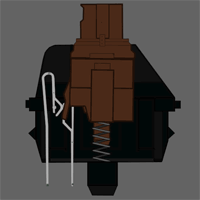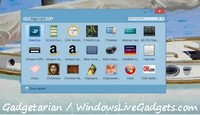Perhaps serious typing needs a mechanical keyboard
What is a mechanical keyboard?
Most inexpensive keyboards, such as those coming with new Windows or Apple computers, even more pricy models such as Microsoft Entertainment or Logitech DiNovo Edge, utilize a flexible membrane layer beneath the keys. When you press a key, a membrane contacts a bottom layer. This allows current to flow, “closing” the switch, so that the parent device registers the key press.
The biggest problem with this type of keyboards is that you have to completely depress the key, also known as “bottoming out.” There is also little to no tactile feedback.
 Without tactile feedback it is very difficult to type without bottoming out every keystroke, causing over-exertion and finger / hand pain, leading even to carpal tunnel syndrome.
Without tactile feedback it is very difficult to type without bottoming out every keystroke, causing over-exertion and finger / hand pain, leading even to carpal tunnel syndrome.
Mechanical keyboards use a complete and separate mechanism / switch underneath each and every key.
This mechanism is constructed to actually write the letter on screen half-way before the switch reaches the bottom, so that instead of pressing with increased force as you reach the bottom, like in membrane keyboards, you use less force, minimizing or even eliminating the impact of your fingers against the body of the keyboard.
In the course of time you may find yourself typing as softly as if surfing, mostly without ever reaching the bottom. However, if you tend to bottom out the keys, you can add Rubber O-Ring Dampeners, that will reduce finger fatique.
A mechanical keyboard is the only keyboard able to register even all keys at once!, which is also known as full N-Key Rollover. This ability is helpful for those who type really fast and need to be able to hit keys in quick succession.
The clicking sound on a mechanical keyboard depends on personal taste, but what is interesting is how many people find it relaxing. You get the rhythm of clicking while you type and often is a calming sound.
Some people find that the very listening to these clicks helps them create a faster typing speed! Plus, not having to bottom out with each key allows to move to the next letter faster, with less energy wasted and with no fear at all, if the letter you pressed was actually written, or maybe written twice, etc.
The majority of mechanical keyboards use Cherry MX Switches, mechanical switches that consist of a spring and two metal contacts. When depressed, this type of switches causes the plastic stem to go down, at which point a steel spring inside closes the switch, signaling that the key has been depressed.
One of the benefits of Cherry MX switches is the gold-plated contacts. Unlike other metals, gold prevents the contacts from rusting, increasing the lifespan of the switch. There are a variety of switch constructions for this type of keys, and they can be differentiated by the color of the stem, which you can see when you remove the keycap. Various types can be better for certain tasks.
